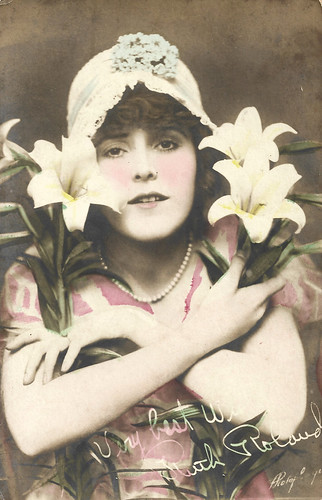
American (or British) postcard. Photo: Photoplayer, L.A.
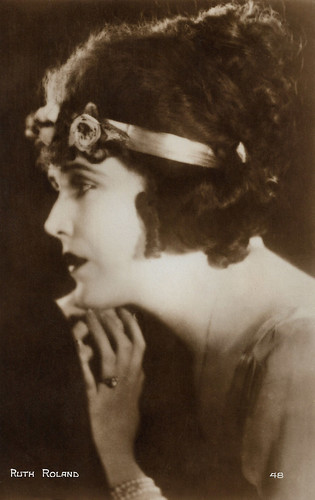
French postcard by Editions Cinémagazine, no. 48.
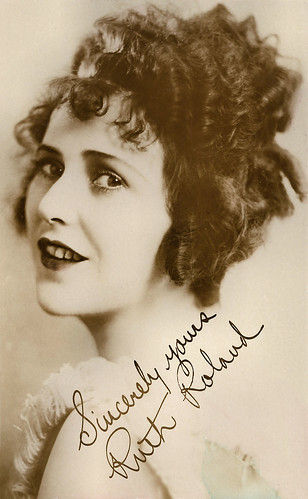
American fan card by Pathé to promote the serial Ruth of the Rockies (George Marshall, 1920).
The leading actress of Kalem
Ruth Roland was born in 1892 in San Francisco, California, USA. She came from a show-business family. Her father, Jack Roland, was a San Francisco theatre manager and her mother, Elizabeth Lillian Hauser, was a professional singer.
Ruth made her acting debut at age three and a half and soon became a professional actress and singer. As a child star in stock and Vaudeville, she toured for five years under the name "Baby Ruth". After her parents' early divorce, she grew up with her mother until she died in 1900 when Ruth Roland was only eight years old.
An aunt then took in Los Angeles over her care. At age 12, she was the youngest student at Hollywood High School. Her Vaudeville act was spotted by Sidney Olcott and his Kalem Company during one of her performances in New York City. He recognised the potential of the then 16-year-old Roland and signed her up for his short film The Scarlet Letter, produced in 1908.
Along with Gene Gauntier, she was soon billed as a "Kalem Girl". Roland was courted by the producers of the time, including Mack Sennett, and her weekly salary was raised from an initial 25 dollars to 100 dollars. Roland was eventually sent to Kalem's West Coast studio in Santa Monica where she was the lead actress and overseer of Kalem House where all the actors lived. Between 1909 and 1914 she was the leading actress of Kalem and was especially good in Westerns and comedies.
From 1914 to 1917 she acted at Balboa Films, in popular serials such as the 14-episode adventure film serial The Red Circle (Sherwood MacDonald, 1915), distributed by Pathé Exchange, with Frank Mayo as her leading man. It was Roland's first serial. Sadly, only a trailer of the serial survives.

American postcard by The Ess and Ess Photo Co., New York. Photo: Kalem.

British postcard. Photo: Kalem. Ruth Roland as the Indian Wife in Her Indian Mother (Sidney Olcott, 1910).
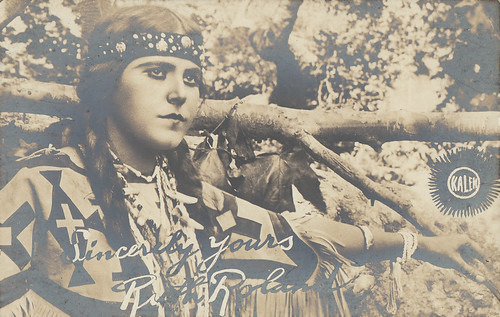
British postcard, no. 70. Photo: Kalem. Ruth Roland as the Indian Wife in Her Indian Mother (Sidney Olcott, 1910). Collection: Marlene Pilaete.
A nitrate collection found in her backyard
A clever businesswoman, Ruth Roland established her own production company, Ruth Roland Serials. She appeared in an early colour feature film Cupid Angling (Louis W. Chauder, 1918). It was the only feature film made in the Natural Color process invented by Leon F. Douglass.
Roland signed a distribution deal with Pathé to make seven new multi-episode serials that proved very successful, e.g. the crime serial The Adventures of Ruth (George Marshall, 1919) and the Western serial Ruth of the Rockies (George Marshall, 1920).
By 1927, Ruth Roland had appeared in 211 silent films, four of which she produced herself between 1919 and 1922 with her own company, Ruth Roland Serials. She decided she had had enough and didn't renew her contract. She didn't need the money, as she had amassed a fortune. She returned to Vaudeville, and spent the next few years on the stage, with a film or two along the way.
When sound came to motion pictures in 1929 she decided to try that medium. The film she made, Reno (George Crone, 1930) with Montagu Love, was not successful, and she retired from the screen after one more film, the mystery From Nine to Nine (Edgar G. Ulmer, 1935).
Ruth Roland was married to Lionel T. Kent from 1917 to 1919 and to actor Ben Bard, from 1929 to her death. Both marriages remained childless. Reclusive and largely forgotten by the public, Ruth Roland died of cancer in September 1937, aged just 45. In 1979 a concrete box with Roland's private nitrate film collection was found in her backyard and donated to the UCLA Film Archive, including the complete 12-part serial Who Pays? (Harry Harvey, H.M. Horkheimer, Henry King, 1915) with Roland herself in the lead opposite Henry King who also co-directed.
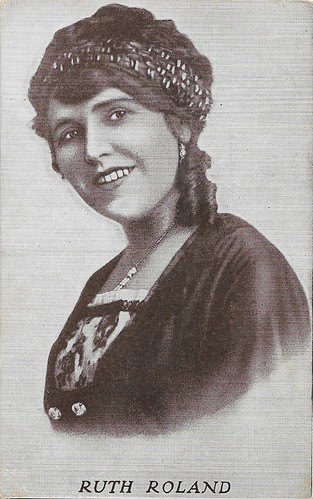
American postcard. It refers to the release of the serial Hands Up (Louis J. Gasnier, James W. Horne, 1918).
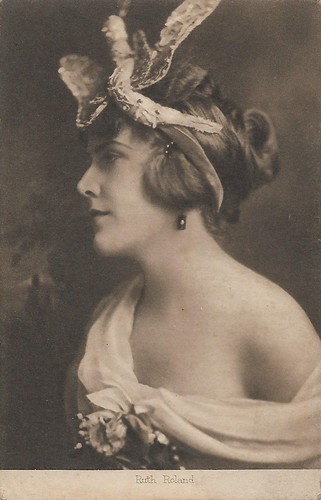
British postcard. Photo: Pathé Frères Cinema Ltd.
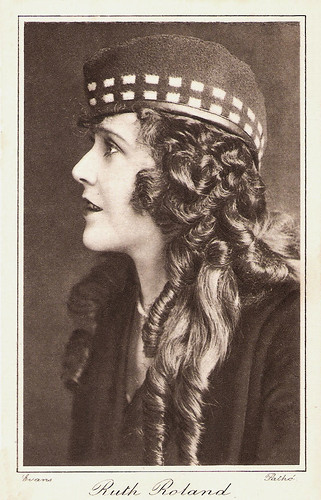
British postcard by Cinema Chat. Photo: Evans / Pathé.
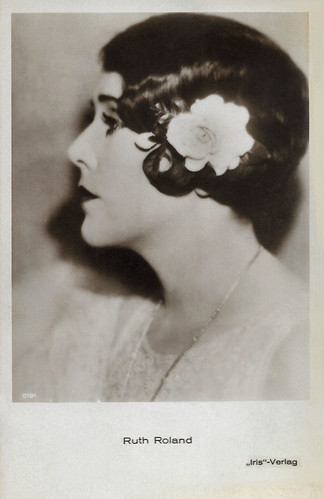
Austrian postcard by Iris Verlag, no. 5191.
Sources: Wikipedia (English, German and Dutch) and IMDb.
No comments:
Post a Comment